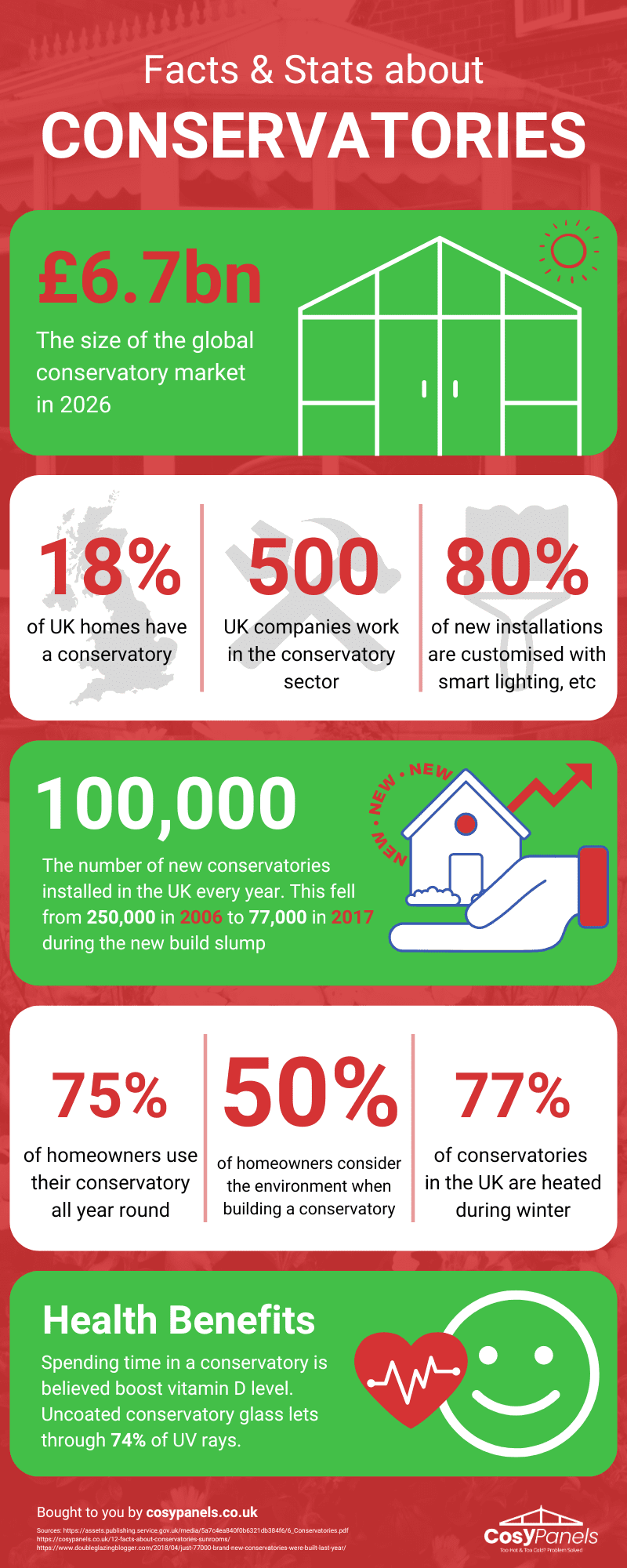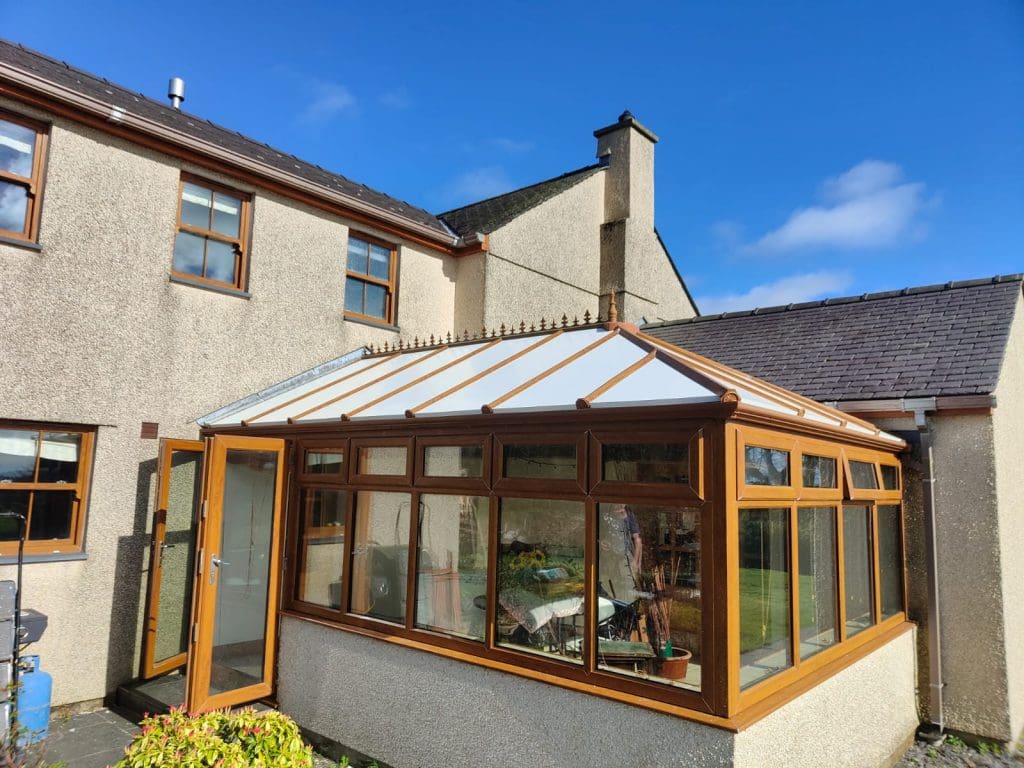As the demand for versatile living spaces continues to rise, conservatories and sunrooms have become increasingly popular among homeowners. These glass-enclosed structures offer a unique blend of indoor comfort and outdoor ambiance. When it comes to facts about conservatories and sunrooms, there’s a wealth of intriguing statistics that can make the decision easier. From their popularity to their impact on property value, here are 12 eye-opening stats and facts about conservatories and sunrooms that everyone should know.
Rising popularity of conservatories
According to recent studies, the demand for conservatories and sunrooms has been steadily increasing, with a reported growth rate of 6% annually over the past five years. According to a recent report by Research & Markets, the global market for conservatories and sunrooms is expected to grow further at a rate of 6.8% from 2021 to 2026, reaching a value of £6.7 billion by the end of the forecast period. Factors driving the growth are urbanisation and changing lifestyles that see more and more people finding themselves “stuck” in-house.
Spoilt for Choice
There are over 500 companies in the UK offering services related to erecting, maintaining and insulating conservatories. The aforementioned report details 340 companies as significant enough to impact the overall market. The remaining companies are mostly one-man-bands.
Boosting Property Value
Homes with conservatories or sunrooms tend to command higher prices in the real estate market. Research indicates that properties with these features can see a significant increase in value, averaging around 5% to 15%.
Year-Round Use
Contrary to popular belief, conservatories and sunrooms aren’t just for the summer months. Statistics show that a majority of homeowners utilise these spaces year-round, with 75% reporting regular use during all seasons.
Health Benefits
Spending time in a conservatory or sunroom has been linked to numerous health benefits. Studies have found that exposure to natural light in these spaces can improve mood and even boost productivity. As far as increase in vitamin D levels is concerned, this depends on type of glass used in your conservatory. Normal untreated glass panels will let 74% of UV radiation through, meaning you can acquire tan in a conservatory, unless the glass panels are composite or covered with film.
Customisation Trends
Homeowners are increasingly opting for customised conservatories and sunrooms to suit their specific needs and preferences. Data indicates that 80% of new installations involve some form of customisation, ranging from size and shape to features like heating and lighting. Bad news for standard pre-fab conservatories.
Ageing Population
With an ageing population, the demand for accessible living spaces is on the rise. Conservatories and sunrooms offer a solution, providing versatile and easily adaptable environments that cater to the needs of older adults. Studies show that 30% of new installations are designed with accessibility features in mind. The Joint Centre for Housing Studies at Harvard University reveals facts about conservatories that suggests a further 33% increase in demand for adaptable conservatories among seniors over the next decade.
Popularity among Millennials
A survey conducted by Houzz found that 42% of millennial homeowners are interested in adding a conservatory or sunroom to their homes, citing reasons such as increased natural light and connection to the outdoors.
Space Utilisation
The American Institute of Architects reports stats suggesting that 60% of architects surveyed believe that conservatories and sunrooms are effective solutions for maximising living space without the need for extensive renovations or additions.
Sustainable Design
As sustainability becomes a top priority for homeowners, there’s a growing interest in eco-friendly conservatories and sunrooms. Research reveals that 50% of consumers prefer sustainable materials and construction methods when investing in these home additions.
Environmental Impact
According to the Environmental Protection Agency (EPA), incorporating passive solar design principles in conservatories and sunrooms can significantly reduce carbon emissions and contribute to sustainable building practices. Studies conducted by the Department of Energy have shown that well-designed conservatories and sunrooms can help reduce energy consumption in homes by up to 30% by providing natural heating and lighting solutions. However, this percentage fluctuates hugely depending on the geographic location of the dwelling.
Facts and stats about conservatories – infographic

Future of conservatories and sunrooms
Market research from Grand View Research highlights the growing trend of smart conservatories and sunrooms, with features such as smart glass technology, retractable roofs, and integrated heating and cooling systems becoming increasingly popular among consumers.
In conclusion, conservatories and sunrooms offer a host of benefits ranging from increased property value to enhanced well-being. With the market poised for continued growth and innovation, these glass-enclosed spaces are likely to remain a popular choice for homeowners seeking to enrich their living environments.


